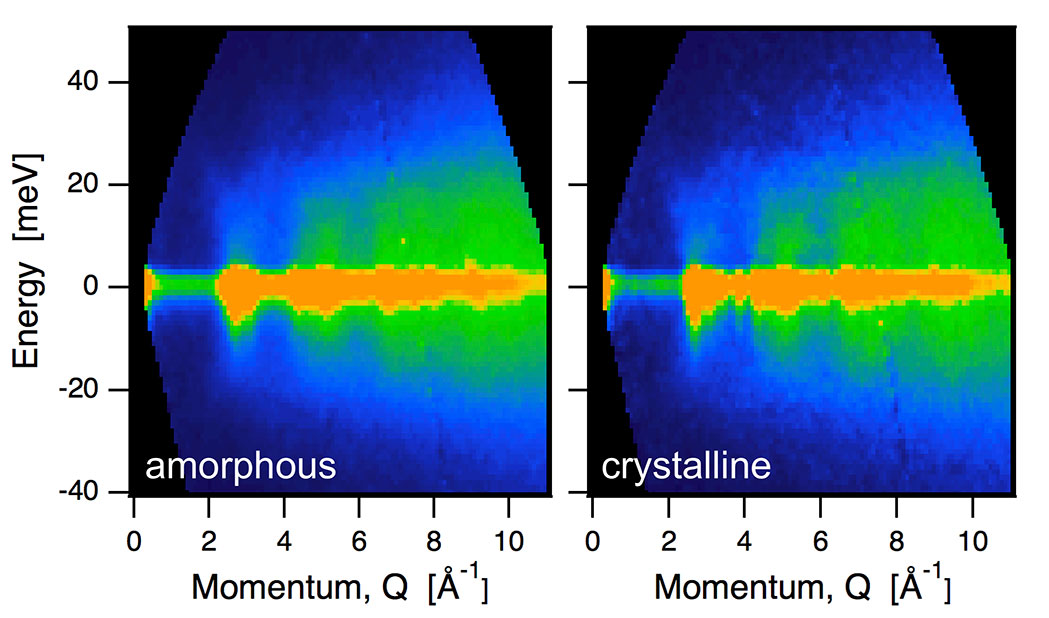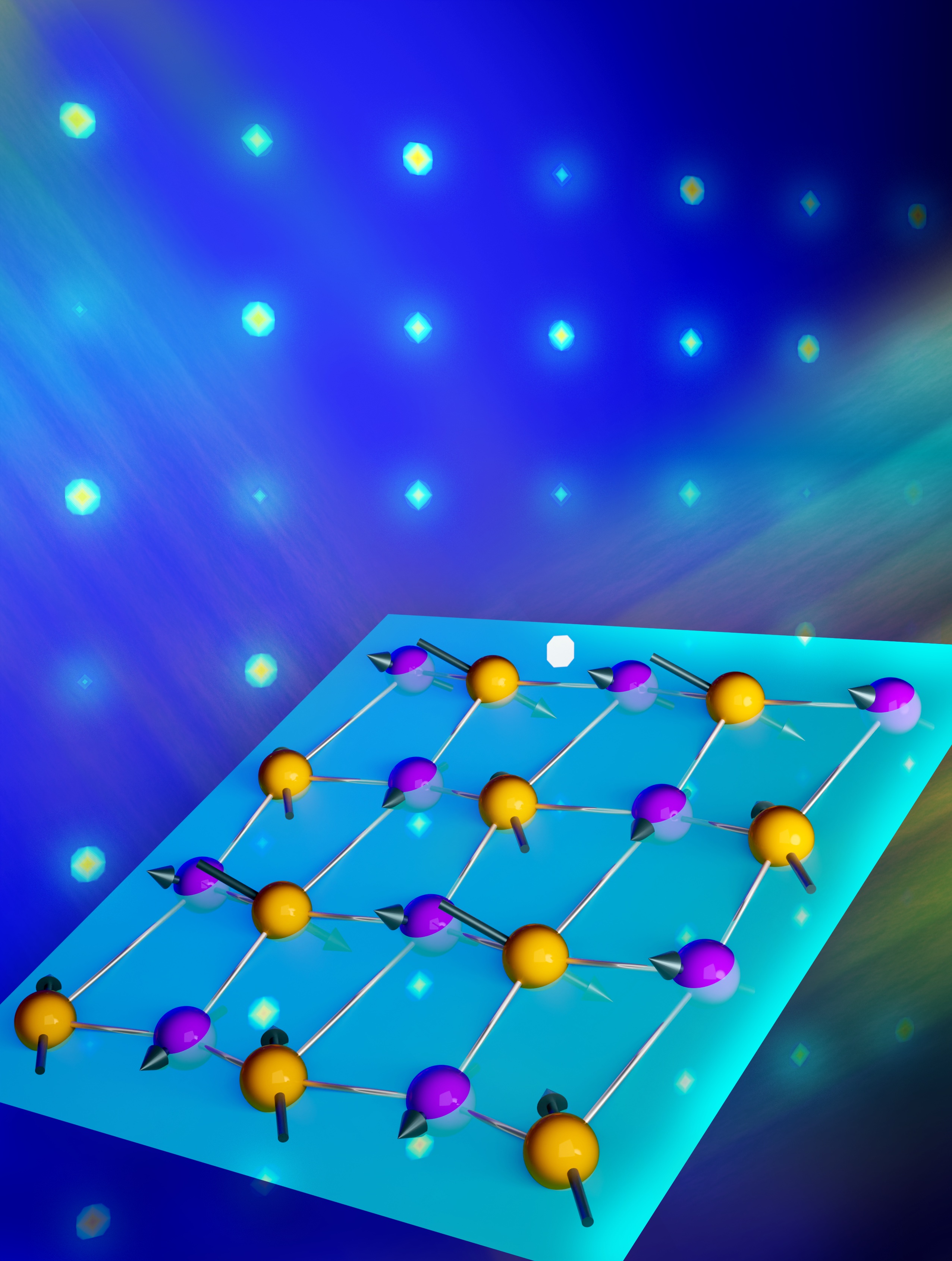Atomic Vibes During Melting?
Where does the heat go when a glass melts into a liquid? Not to changing the vibrations of atoms….

The Science
Extra heat goes into a solid glass when it is heated into a molten liquid. "Where does the heat go?" has been a question for decades. It could go into how the atoms rearrange randomly in the liquid, or into how atoms vibrate, or both. Enabled by today's ability to inject a high flux of neutrons and other advanced tools, scientists demonstrated that almost all the heat goes into the random rearrangement of atoms, rather than to changing their patterns of vibrations, as the metallic glasses melt.
The Impact
The dynamics of the atomic structure and interactions at the point where materials are about to melt are critical to understanding glassy materials. Scientists showed that recently possible, rapid inelastic neutron scattering techniques could measure these atomic-level dynamics. This approach could be transformative for exploring similar phenomena in a wide range of materials.
Summary
Glasses we encounter in everyday life are mostly transparent and used for everything from window panes to phone screens. Glasses are solids that usually break when hit by a hammer. On the other hand, liquid flows around the hammer as it hits. When a glass is heated up, it becomes a liquid. The glass absorbs a lot of heat when it transitions from solid to liquid. “What does this heat do to the atoms in the glass?” has been a decades-old question not directly answered with experiments.
Specifically, a metallic glass can soften upon heating. This is called the glass transition. Below the glass transition, atoms are locked in a specific arrangement. Above this temperature, the atoms are free to reorganize, leading to an increased disorder (entropy). Atoms may also vibrate differently above and below this transition. Different theories assign different importance to the vibrational entropy near and above the glass transition. However, atomic vibrations have never been measured across the glass transition, at least for metallic glasses. Measuring vibrational spectra by inelastic neutron scattering was previously impossible because of the long times needed for the measurements during which the system would crystallize. Today, however, the high neutron intensity and instrument efficiency at the Spallation Neutron Source (SNS) have made these measurements possible for the first time.
A team from Caltech heated a copper zirconium glass in situ in an advanced spectrometer at the SNS. From the inelastic neutron scattering data of the glass at different temperatures through its glass transition, the vibrational spectra as a function of temperature were extracted. Interestingly, the vibrational spectra showed very little change, largely eliminating vibrational entropy as the source of excess entropy at the glass transition. The excess heat goes almost entirely into rearranging the atoms, thus changing only the configurational entropy. This research answered a decades-old question about the entropy of the glass transition. The revised atomistic viewpoint may be pertinent to the melting of crystalline materials too. The demonstration of rapid inelastic neutron scattering measurements with modern instruments paves the way for the exploration of dynamics of near phase transitions in a wide range of materials.
Contact
Brent Fultz
California Institute of Technology
btf@caltech.edu
Funding
This work was supported by the Department of Energy (DOE), Office of Science, Office of Basic Energy Sciences, including support of the Spallation Neutron Source, a DOE Office of Science user facility, and the National Science Foundation (Distributed Data Analysis for Neutron Scattering Experiments (DANSE) software).
Publications
H.L. Smith, C.W. Li, A. Hoff, G. Garrett, D.S. Kim, F.C. Yang, M.S. Lucas, T. Swan-Wood, J.Y.Y. Lin, M.B. Stone, D.L. Abernathy, M. Demetriou, and B. Fultz, “Separating the configurational and vibrational entropy contributions in metallic glasses.” Nature Physics 13, 900 (2017). [DOI: 10.1038/NPHYS4142]
Related Links
Caltech news release:Caltech's Chen building breaks ground
Phys.org article: Studying entropy in metallic glasses
Highlight Categories
Performer: University , DOE Laboratory , SC User Facilities , BES User Facilities , SNS
Additional: Collaborations , Non-DOE Interagency Collaboration



